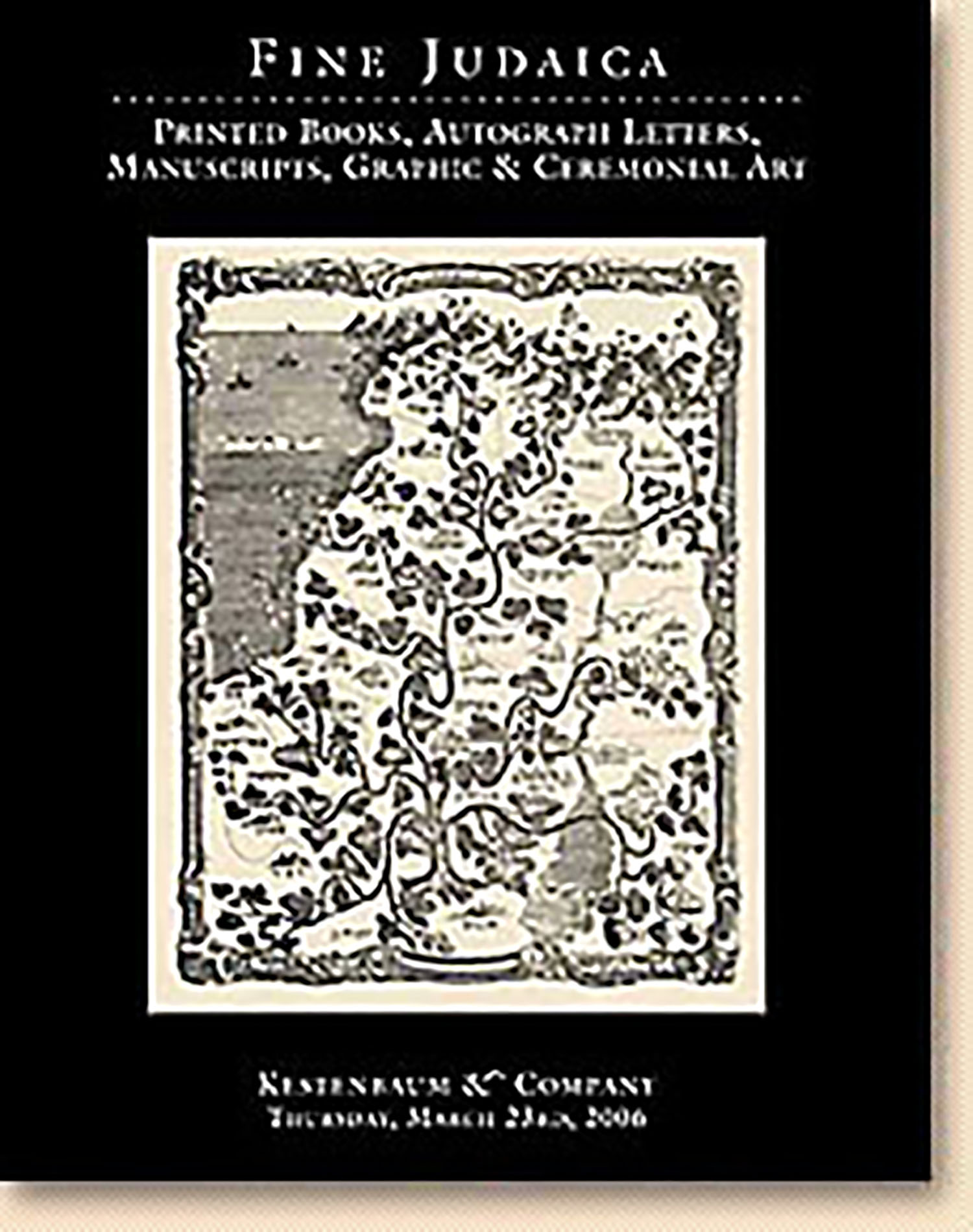“Eminent American Clergymen” in: American Phrenological Journal and Life Illustrated. Vol. 47, No. 4 (Apr. 1868). pp. 144-48.

AUCTION 32 |
Thursday, March 23rd,
2006 at 1:00
Fine Judaica: Printed Books, Autographed Letters, Manuscripts, Graphics and Ceremonial Art
Lot 14
(AMERICAN JUDAICA)
“Eminent American Clergymen” in: American Phrenological Journal and Life Illustrated. Vol. 47, No. 4 (Apr. 1868). pp. 144-48.
New York: 1868
Est: $2,000 - $2,500
Phrenology, a popular nineteenth-century pseudo-science, taught that various personality traits and mental abilities correspond to specific facial and cranial characteristics. It was popularized in the United States by the American Phrenological Journal, which published a series of articles on the clergymen of various American religious denominations to determine why certain individuals are drawn to particular religions (see vol. 41, no. 5, p. 133). The penultimate article featured twelve prominent American rabbis with their portraits and biographies, as well as analyses of their physiques, oratorical abilities and character. This is the earliest group portraiture of American rabbis; there may be no other portraits of some of the subjects.
In his introduction, the author states: “In the twelve faces presented, there is not an indication of impaired health or physical weakness. In general, it will be seen that the base of the brain is large…They are largely developed, also, in the lower part of the forehead; indicating superior powers of observation, practical talent, knowledge of things, adaptation to the acquisition of factitious knowledge…One, the Rev. Samuel Isaacs, shows a large top-forehead. We judge him to be more of a theorist than any other man in the group…Another marked characteristic is that of Language. The full eye belongs to the Hebrew and we have never met one of either sex who was not a good talker…There are other striking characteristics…” While the author had only positive assessments to offer of all the subjects, he reserved the highest praise for Isaac Leeser: “He has probably accomplished more to promote intelligence among the Jews of this country, and to inspire in them an attachment to their religion and ancient faith, than any other person.” A footnote informed readers that Leeser had died after the article was written.
See People of Faith—Land of Promise: An Exhibition in Celebration of 350 Years of Jewish Life in America (JTS), no. 65.
This current issue offered here is bound with vols. 47-8, which include articles on other American denominations.
